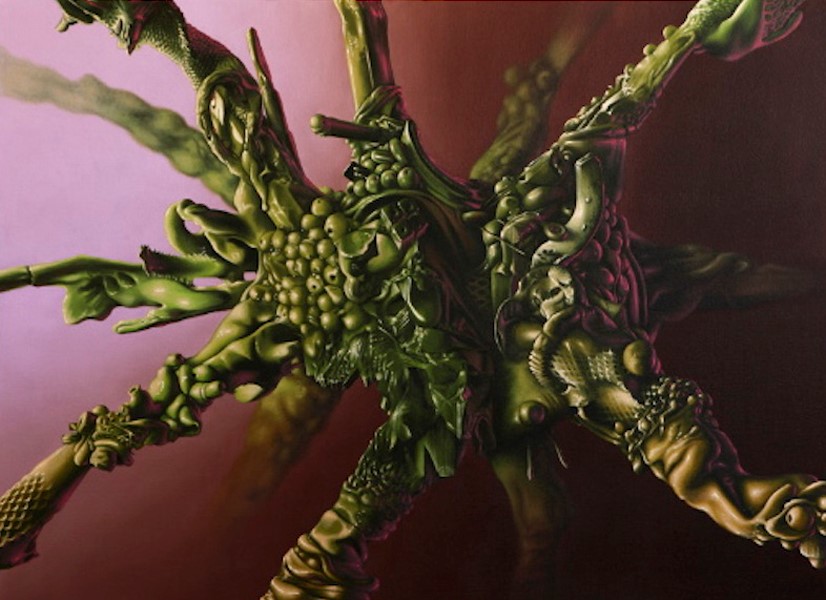Stephen Peirce paints futuristic organic anomalies and enormous psychedelic terrains full of familiar objects that have been transformed into something viscous and alien, providing visions of an out-of-control nature caught in perpetual flux and
Stephen Peirce paints futuristic organic anomalies and enormous psychedelic terrains full of familiar objects that have been transformed into something viscous and alien, providing visions of an out-of-control nature caught in perpetual flux and entropic transformation. On the surface, the work somehow recalls Roger Dean (whose work adorned the covers of albums by the seminal prog-rock outfit Yes), but there is something far deeper at work here than mere sci-fi fantasy shtick. Peirce’s work reflects our modern world, in which genetic modification and bizarre shifts in global climate are witnessing both the annihilation of species and the embryonic stages of new biological forms. AnOther entered his strangely enticing universe at the opening of his latest exhibition, Supernature.
Stephen Peirce: "I like to think my paintings have an ambiguity. They will often refer to some aspect of the shape of a form or to the atmosphere and light suggested by the colours used, but they are equally used to refer to some deeper motivation for the work. The current exhibition is about something beyond nature – an exploration of a world beyond the boundary of human experience. It hints at fallen civilizations re-emerging from chaos and an enhanced version of nature fortified with an element of (human) design. Some of the paintings in the exhibition are positive, exploring re-growth and evolution, but they are contrasted with works of a more apocalyptic nature exploring decay and the notion of entropy. I suppose the show ponders the perpetual human struggle to control nature. My process in making these works is multi-layered. First, I work on sculptural forms, which provide the subject matter – the building blocks for the paintings. For the sculptures, I work with materials to hand – electronic parts, plastics, glues, mechanical components, the detritus and debris of daily life, plaster, paint and varnish, glass beads. The sculptures are then photographed in a theatrical way with coloured lighting. These steps are important for the paintings because I am always thinking about surfaces and textures to create forms that have a strong visceral presence, an undeniable reality. As a painter, these textures and surfaces described in coloured light are a joy to reproduce and oil paint has proved itself equal to the task throughout the history of painting. My use of rich colours add an hallucinatory sense of unreality while the glossy glazes of pine resin add a lustre which emphasises the often wet, shiny, visceral or jewel-like quality of the subject. My aesthetic is centred on a parallel world, an alternate present or a modified reality. I certainly have an eye on what may be – but not necessarily in the future. It is about the changes we encounter every day. It is about the transitory nature of life. I am trying to communicate a sense of anxiety at the wasteful nature of humankind, the inevitability of decay and a subsequent re-birth demonstrates the cyclical nature of things and the forms in my paintings are at a point between these states. What interests me is to take a palette of familiar objects and to engineer these elements into an alternate reality with little relation to our own. This world may indeed resemble a post-nuclear planet but it could equally be a post-human earth full of hints about it's past. It is a place full of hope as well. I like to think that this post-nuclear, post-human place is filled with optimism."
Supernature is at the Estace gallery, Paris from May – June 18
